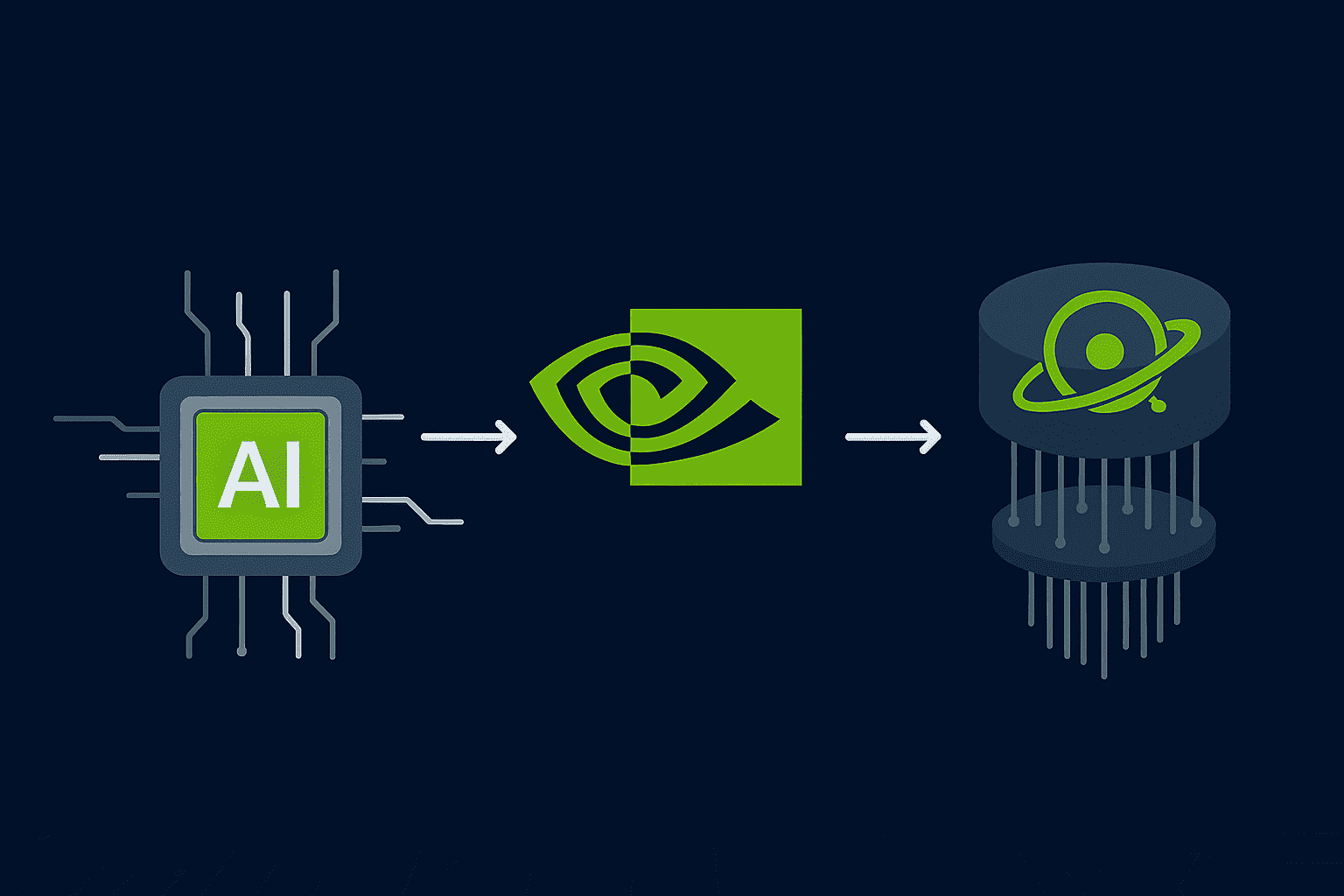How NVIDIA is combining the power of artificial intelligence and quantum computing to redefine the future of corporate computing.
In a data and AI-driven economy, NVIDIA has become a key player in global digital transformation. What began as a manufacturer of graphics cards for video games has evolved into a company leading the development of supercomputing and artificial intelligence (AI) on a global scale. Its latest breakthrough, CUDA-Q, marks a turning point: the advent of hybrid quantum computing, where the classical power of GPUs is combined with quantum processors to tackle the most complex challenges facing the future of business.
What is CUDA?
CUDA (Compute Unified Device Architecture) is a parallel computing platform developed by NVIDIA that allows the power of GPUs to be harnessed for complex calculations beyond graphics. Since its launch in 2006, CUDA has transformed the GPU into a massively parallel processor capable of executing scientific, financial, and artificial intelligence tasks with performance far exceeding that of traditional CPUs. This architecture paved the way for accelerated computing and laid the foundation for today’s revolution in artificial intelligence and supercomputing.
What is CUDA and why was it a turning point for NVIDIA?
In 2006, NVIDIA introduced CUDA (Compute Unified Device Architecture), an environment that allowed graphics cards (GPUs) to execute not only graphics but also scientific and artificial intelligence computations. With CUDA, the GPU evolved from a visual component into a massive computing tool, capable of accelerating simulations, financial analysis, and neural network training. In short, CUDA transformed graphical performance into computational power. This strategic decision changed the course of the tech industry and paved the way for the modern era of artificial intelligence.
From artificial intelligence to the quantum leap
Modern artificial intelligence, from voice recognition to generative models like ChatGPT, relies on the power of NVIDIA GPUs. But even the most advanced AI hits limits when problems become too complex or variable. This is where quantum computing comes into play. This new paradigm uses qubits instead of bits, allowing multiple states of information to be processed simultaneously. In theory, this makes it possible to solve in seconds calculations that classical systems would take years to complete.
The challenge: quantum technology is still in development. Quantum processors are unstable and expensive. For this reason, the industry is moving toward a hybrid model, where classical and quantum computing power work together.

What is hybrid quantum computing?
Hybrid quantum computing combines the best of both worlds:
- Traditional GPUs and CPUs, for large-scale and stable operations.
- Quantum processors (QPUs), to tackle optimization, simulation, and analytical problems that require quantum capabilities.
This hybrid model enables faster scientific discoveries, improved decision-making, and the creation of more accurate and sustainable artificial intelligence algorithms.
CUDA-Q: The new bridge between the classical and quantum worlds
Aware of this convergence, NVIDIA launched CUDA-Q, its platform for developing classical-quantum applications. CUDA-Q allows companies and developers to program and run hybrid algorithms without needing to master quantum physics. Through a single interface, it enables the integration of traditional GPUs with quantum processors from different providers.
“CUDA-Q is the next step in the evolution of accelerated computing: an environment where quantum and classical systems work together as one.”
— Jensen Huang, NVIDIA’s CEO
With this initiative, NVIDIA aims to move quantum computing beyond the experimental stage and make it an accessible tool for business innovation.
Business applications of hybrid quantum computing
The potential impact of CUDA-Q in the corporate environment is vast. Its main applications include:
- Logistics and energy optimization: real-time planning of routes and resources using hybrid algorithms.
- Finance and risk management: more accurate simulations to detect patterns and market volatility.
- Materials and drug design: accelerated molecular analysis through classical-quantum simulation.
- Cybersecurity and cryptography: development of algorithms resistant to future quantum computing.
These capabilities will enable organizations to reduce costs, anticipate risks, and accelerate innovation in a sustainable way.
How to Integrate CUDA-Q into Corporate Technology Strategy
To harness the potential of this technology, companies can follow three strategic steps:
- Identify hybrid use cases: processes that require intensive simulations or complex predictive models.
- Develop specialized talent: teams with skills in AI, parallel programming, and quantum fundamentals.
- Build technological partnerships: collaborate with partners such as NVIDIA, quantum startups, or research institutions.
This approach prepares corporate infrastructure for a smooth transition into the quantum era without compromising operational continuity.
Challenges and opportunities of hybrid quantum computing
Despite its potential, hybrid computing faces several challenges:
- Technical maturity: quantum processors are still in experimental stages.
- Initial costs: quantum infrastructure requires specialized investments.
- Standardization: integrating hardware and software from different providers poses technical and regulatory challenges.
However, those who adopt an early and incremental approach will be better positioned to lead in a future where artificial intelligence and quantum computing converge.
Is your company ready for the changes that hybrid quantum computing will bring?
At ACK3, we combine artificial intelligence and advanced cybersecurity to protect and empower your organization, anticipating the arrival of the quantum era.







